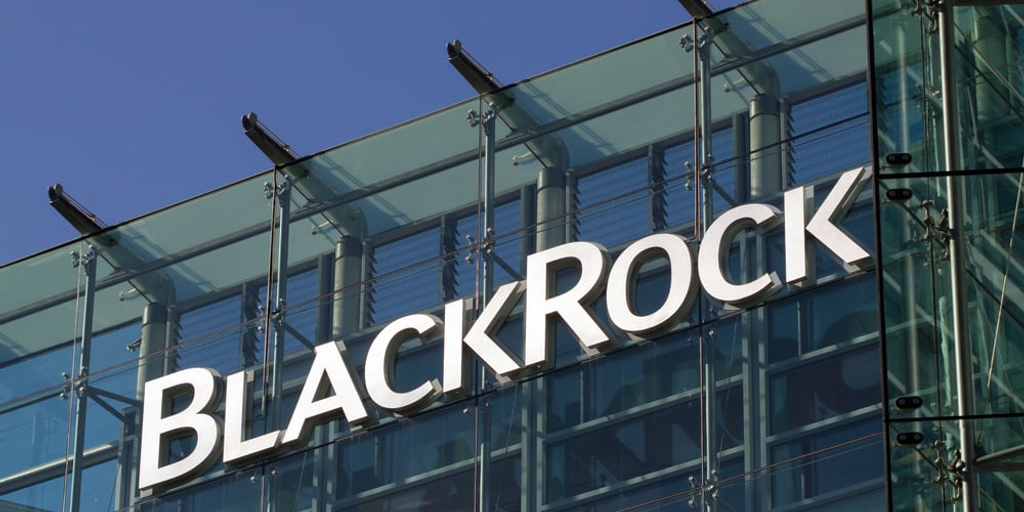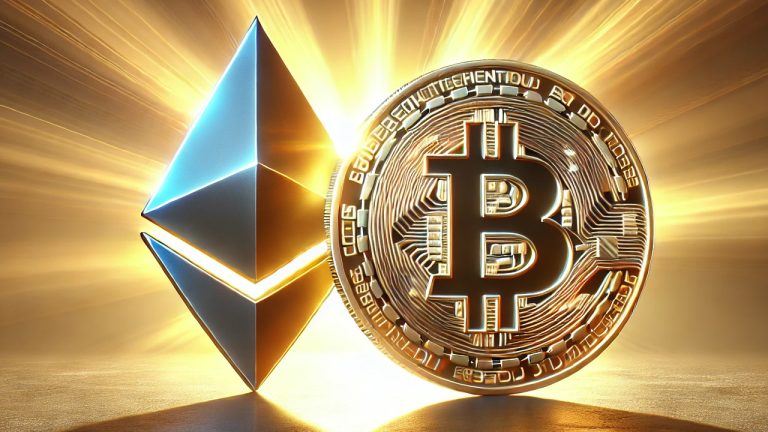Cryptocurrencies that focus on growing sectors like artificial intelligence, the metaverse, or e-commerce have better chances for development. For example, EarthMeta, a project in the metaverse, offers a platform where users can have digital real estate assets.
When evaluating the success of a cryptocurrency project, the size of the market it targets is important. Fast-growing sectors like the metaverse or AI attract a large audience interested in new technologies. These fields are growing, creating opportunities for cryptocurrencies to grow with them. The metaverse, for example, allows people to interact, trade digital goods, or even work in virtual spaces. Cryptocurrencies help make these exchanges easier and more secure.
The e-commerce sector is another fast-growing market where cryptocurrencies can play an important role. With online shopping growing, cryptocurrencies can make payments faster and reduce costs. By simplifying transactions, they also lower fees for businesses and customers.
Artificial intelligence is also expanding. Cryptocurrencies that use AI can automate processes, manage data, and improve security. This combination of blockchain and AI offers better solutions, making these projects attractive in a technology-driven world.
In addition, decentralized finance (DeFi) is changing how financial services work. By removing middlemen, DeFi makes it easier to access financial services, like loans or asset exchanges, in a transparent way. This attracts more people who want flexible financial solutions.
Lastly, the tokenization of physical assets is an emerging trend. It allows real-world items, like real estate or artwork, to be turned into tokens that can be traded on the blockchain. This process makes transactions more secure and transparent, and it might change how we own and trade valuable assets.
The success of a cryptocurrency depends not only on its technology but also on the size and growth of the market it targets. Projects in expanding areas like e-commerce, AI, and DeFi have a higher chance of thriving than those in niche markets. These cryptocurrencies benefit from growing adoption and dynamic markets, which help them succeed in the long run.
Top Cryptocurrencies Poised for a Strong Future : 1 – EarthMetaEarthMeta, a project with probably one of the best futures, operates in the metaverse and artificial intelligence sectors. The metaverse is a virtual space where users can buy digital lands, engage in various activities, such as trading digital assets, participating in events, or simply exploring new digital environments. This platform aims to create an immersive space where users can explore a range of interactive experiences. By integrating AI into this environment, the platform enhances user interactions and delivers smarter, more personalized experiences.
The metaverse market is rapidly expanding. In 2022, it was valued at $65.5 billion, with projections estimating it will reach $936.6 billion by 2030. This growth is driven by increasing interest in digital worlds, where users can not only interact but also build and trade valuable virtual assets. This expanding sector appeals to a broad audience, from casual users to businesses looking for new ways to engage with consumers in virtual environments.
This platform offers a wide range of possibilities, from virtual land ownership to participation in digital economies. As the demand for these immersive environments continues to grow, the platform positions itself as a key player in the space by providing users with a broad array of features and opportunities. By tapping into the growing metaverse and AI sectors, the platform has the potential to attract a diverse and global audience.
Artificial intelligence further strengthens the platform by improving how users experience the metaverse. AI allows the platform to adapt to user preferences, offering tailored content and smarter responses. The AI market was valued at $136.6 billion in 2022, with forecasts predicting it will grow to $1,811.8 billion by 2030. By leveraging these technologies, the platform ensures it stays ahead in a competitive landscape, delivering more than just a virtual space but a fully adaptable and intelligent digital environment.
The combination of AI and digital worlds creates a platform that is well-equipped to meet the needs of a growing audience. As more users embrace digital assets and virtual experiences, the need for adaptable, interactive environments will continue to rise. The metaverse is already shifting from a niche interest to a mainstream phenomenon, with users ranging from gamers to professionals seeking new ways to connect and collaborate in a digital landscape.
This project capitalizes on two of the most rapidly growing sectors today. By focusing on creating a space where digital assets and AI converge, it aims to deliver a platform that offers more than just virtual environments—it offers a space where users can interact, trade, and innovate. As the global demand for virtual worlds increases, this platform is positioned to meet that demand by providing a sophisticated yet easy-to-use environment for users around the world.
2 – EthereumEthereum is the second-largest cryptocurrency by market capitalization. More than just a digital currency, Ethereum is a blockchain platform where developers can create smart contracts and decentralized applications (dApps). These operate without intermediaries, making Ethereum an important player in fields like decentralized finance (DeFi) and non-fungible tokens (NFTs). One of Ethereum’s key strengths is hosting smart contracts, which automatically execute transactions when conditions are met. This eliminates the need for third parties, and as a result, Ethereum has become central to DeFi, allowing users to lend, borrow, and trade digital assets independently.
In 2022, the DeFi market reached $13.61 billion and is expected to grow to $231.19 billion by 2030. The rapid expansion of DeFi comes from its ability to provide financial services without traditional banks. Platforms like Uniswap let users trade cryptocurrencies directly, while Aave enables decentralized lending and borrowing—all powered by Ethereum’s smart contracts. DeFi transforms how people access financial services globally, especially in places where banking options are limited.
Ethereum also plays a significant role in the rise of NFTs. NFTs represent ownership of unique digital assets, such as art or music. In 2021, NFT sales hit $24.9 billion, largely thanks to the Ethereum blockchain. Platforms like OpenSea allow artists and collectors to buy and sell NFTs securely, with the Ethereum blockchain ensuring the authenticity of these digital items. This level of transparency is key for NFTs, as each token is unique and traceable.
While Ethereum has seen tremendous growth, it faces challenges with scalability and high transaction fees, known as gas fees. To address this, Ethereum 2.0 is rolling out, switching from Proof of Work (PoW) to Proof of Stake (PoS). This upgrade will reduce energy use, lower transaction fees, and improve the speed of the network. Future developments like sharding and ZK-rollupswill further enhance Ethereum’s ability to handle more transactions at once.
Despite competition from other blockchains like Solana and Avalanche, Ethereum remains a top choice for developers due to its large community and established ecosystem. The shift to Ethereum 2.0 is key to ensuring the platform remains fast and cost-effective, supporting the growth of DeFi, NFTs, and beyond.
3 – AvalancheAvalanche is a blockchain platform known for its high scalability, low transaction fees, and fast processing speed. Unlike older blockchains, Avalanche aims to solve major issues like slow speeds and high costs. Because of these features, Avalanche has become a popular choice for developers building decentralized applications (dApps) and financial services in decentralized finance (DeFi).
Avalanche uses a unique consensus method called Avalanche Consensus, which allows thousands of validators to participate in the network, ensuring low delay and high security. Thanks to this, Avalanche can process up to 4,500 transactions per second (TPS), making it one of the fastest blockchains available.
One of Avalanche’s most exciting features is its subnets. These are customized blockchains that allow developers to create their own networks with specific rules for governance, security, and speed. This flexibility attracts businesses and institutions that want to use blockchain technology in a personalized way to meet their unique needs.
Avalanche has grown quickly in the DeFi space. Several platforms and applications, such as Aave, Pangolin, and Trader Joe, have integrated with Avalanche because of its lower fees and faster transaction speed. In 2023, the Total Value Locked (TVL) on Avalanche’s DeFi platforms reached around $3.4 billion, showing that it is becoming a key player in DeFi. Avalanche’s compatibility with the Ethereum Virtual Machine (EVM) also makes it easy for developers to move their Ethereum applications to Avalanche without rebuilding them from scratch.
Avalanche is also growing in the NFT and gaming sectors. Projects like Crabada and Avalaunch use Avalanche’s scalability to create smooth user experiences in decentralized games and NFT platforms.
Avalanche’s focus on interoperability is important too. Through Avalanche Bridge, users can transfer assets between Ethereum and Avalanche, giving them more flexibility and easier access to both ecosystems. This ability to connect different blockchains is important as users increasingly want solutions that work across different networks.
The market potential for Avalanche is huge. According to recent studies, the global blockchain technology market was valued at $10.02 billion in 2022 and is expected to grow to $1.431 trillion by 2030, with a compound annual growth rate (CAGR) of 87.7% between 2023 and 2030. Thanks to its ability to offer decentralized, scalable, and interoperable solutions, Avalanche is well-positioned to capture a large share of this expanding market.
4 – 5thScape5thScape is an emerging crypto presale project designed to leverage the booming sectors of the metaverse and artificial intelligence (AI). The aim is to create a decentralized digital world where users can own virtual assets, interact through avatars, and benefit from AI-driven experiences. Built on blockchain technology, it focuses on merging immersive virtual experiences with the growing demand for digital ownership and decentralized economies.
The metaverse market is growing rapidly. In 2022, the global metaverse market was valued at $65.5 billion and is projected to reach $936.6 billion by 2030, expanding at a compound annual growth rate (CAGR) of 41.6%. Similarly, the AI market was valued at $136.6 billion in 2022 and is expected to reach $1.81 trillion by 2030. These numbers illustrate the incredible growth potential for projects that can successfully integrate both sectors. – One of the unique aspects of 5thScape is its focus on providing users with virtual land ownership. In the metaverse, owning digital land is becoming increasingly popular, with platforms like Decentraland and The Sandbox generating significant revenue from virtual real estate sales. In 2021 alone, virtual land sales exceeded $500 million, proving the market’s increasing interest in digital assets. In 5thScape, users will be able to buy, sell, and trade virtual land and assets, empowering them to build and control their environments within this immersive ecosystem.
The integration of AI within the platform adds another layer of innovation. By using AI-driven interactions, the virtual world will feel more dynamic and responsive to user actions. These intelligent systems could allow users to interact with non-player characters (NPCs) that adapt to their preferences and behaviors, making the environment feel more lifelike. This personalization of virtual experiences is expected to attract a wide range of users, from casual gamers to businesspeople looking to buy a digital real estate.
The economic aspect of 5thScape is also worth noting. With a player-driven economy, users can participate in virtual commerce, offering services, products, and even entertainment. This decentralized economy is built on blockchain technology, ensuring that all transactions are transparent and secure. The ownership of virtual land and digital assets is verified through smart contracts, making it possible for users to trade or sell their holdings with confidence. This digital economy reflects real-world financial systems but operates within a fully virtual space.
The potential of 5thScape is further supported by the rapid growth of the decentralized finance (DeFi) sector. DeFi allows users to engage in financial activities, such as lending, borrowing, and trading, without traditional intermediaries like banks. In this context, 5thScape could introduce decentralized finance mechanisms within its virtual world, offering users the ability to earn passive income through staking, yield farming, or even lending their digital assets. This makes the project an appealing choice for those already invested in the crypto and DeFi spaces.
The platform also emphasizes user-generated content, enabling creators to build virtual experiences, design assets, and engage with the broader community. This will foster a vibrant ecosystem where users not only consume content but actively contribute to the development of the virtual world.
5 – ArtemisArtemis is a crypto presale project that aims to carve out its place in the fast-growing world of blockchain technology by offering early access to a decentralized platform designed for various financial and digital services. The project focuses on providing users with innovative financial tools, digital asset management, and investment opportunities, all within a secure and decentralized framework built on blockchain.
The project comes at a time when the blockchain market is expanding rapidly. In 2022, the global blockchain market was valued at $10.02 billion and is expected to grow to $1.43 trillion by 2030, with a compound annual growth rate (CAGR) of 87.7%. With the rise of decentralized finance (DeFi), non-fungible tokens (NFTs), and other digital assets, Artemis is positioned to take advantage of these burgeoning trends.
One of the primary features of Artemis is its focus on DeFi, enabling users to manage their finances independently of traditional banking systems. The platform will offer features like staking, yield farming, and lending, all of which have become popular within the crypto world. With DeFi expanding rapidly—valued at $13.61 billion in 2022 and projected to reach $231.19 billion by 2030—Artemis provides users with early access to one of the most exciting developments in the crypto space.
Additionally, Artemis aims to integrate with the rapidly growing NFT market, offering users the ability to buy, sell, and trade digital assets securely. The global NFT market was valued at $24.9 billion in 2021, and this growth is expected to continue as more industries adopt NFTs for digital ownership and representation of assets. Artemis seeks to capitalize on this by offering a platform for the creation, storage, and exchange of these assets. What makes Artemis unique is its user-centered approach. The platform is designed to make the world of decentralized finance and digital assets accessible to both newcomers and seasoned crypto enthusiasts. The interface will be straightforward, ensuring that even those unfamiliar with blockchain technology can navigate its features. The emphasis on security and transparency, ensured through blockchain technology and smart contracts, guarantees that all user transactions are protected and verifiable.
As part of its presale, Artemis will offer early access to tokens, which can later be used within the platform for transactions, staking, and governance. Early adopters often receive these tokens at a discounted price, with the potential for significant growth as the platform expands. The potential for profit, along with the ability to participate in the governance of the platform, makes this presale an attractive opportunity for those looking to get involved early in a promising project.
The project is set against the backdrop of an ever-growing blockchain and crypto market. With blockchain technology being adopted by sectors like finance, entertainment, and even healthcare, the future for platforms like Artemis is promising. As digital assets become more integrated into everyday life, the need for platforms that allow seamless management and exchange of these assets will only increase.
6 – Monero(XMR) is a privacy-focused cryptocurrency designed to provide users with complete anonymity and confidentiality for their transactions. Launched in 2014, it differentiates itself from other cryptocurrencies like Bitcoin by focusing on untraceable transactions. Monero achieves this through advanced cryptographic techniques, making it impossible to trace the sender, receiver, or transaction amount on the blockchain. This makes Monero a popular choice for users seeking enhanced privacy in the world of cryptocurrencies.
The privacy features of Monero rely on three primary technologies: Ring Signatures, Stealth Addresses, and RingCT (Ring Confidential Transactions). These technologies work together to ensure that transactions cannot be linked to a specific user or wallet. Ring Signatures hide the identity of the sender, Stealth Addresses obscure the recipient, and RingCT conceals the transaction amount. These features allow users to transact with confidence, knowing that their personal information remains completely private.
As the demand for privacy coins grows, Monero has become one of the most well-known cryptocurrencies in this category. In 2023, the global privacy coin market was valued at approximately $3.4 billion and is expected to grow at a compound annual growth rate (CAGR) of 10% over the next several years. This growth is driven by increasing concerns about online privacy and the desire for individuals to maintain control over their financial information. Monero, being one of the leading coins in this space, is well-positioned to benefit from this trend.
One of the primary use cases for Monero is its adoption in industries where privacy is paramount. For instance, many users prefer Monero for transactions on decentralized markets or in countries with restrictive financial regulations. The fungibility of Monero is another advantage, meaning that every unit of XMR is interchangeable with another, and it is impossible to trace the history of any coin. This is unlike Bitcoin, where certain coins may be “blacklisted” due to their previous association with illegal activities.
While Monero offers a high level of privacy, it has faced scrutiny from governments and regulatory bodies. Some see the anonymous nature of the currency as a potential tool for illicit activities, and as a result, Monero has been delisted from several exchanges due to regulatory concerns. However, its robust privacy features have also made it a tool for legitimate users who prioritize financial confidentiality.
In addition to privacy, Monero focuses on decentralization. It uses a Proof of Work (PoW) consensus algorithm, similar to Bitcoin, but with enhancements to prevent specialized mining hardware (ASICs) from dominating the network. This allows more individuals to participate in the mining process, ensuring that the network remains decentralized and resistant to centralization.
Despite competition from other privacy-focused cryptocurrencies such as Zcash and Dash, Monero continues to stand out due to its focus on default privacy. Unlike Zcash, where privacy is optional, Monero ensures that all transactions are private by default, which strengthens its appeal to users who prioritize anonymity.
7 – BNBBNB (Binance Coin) is the native cryptocurrency of the largest global crypto trading platform. As the adoption of digital assets increases worldwide, the demand for platforms where users can securely buy, sell, and trade their cryptocurrencies continues to grow. In 2023, over 420 million people worldwide used crypto, and with Binance being one of the most popular exchanges, BNB plays an important role. One of the primary uses of this token is to allow users to pay trading fees at a discounted rate, offering incentives for frequent traders to hold and use BNB. Source: Triple A Crypto Report
This discount structure has been a driving force behind the token’s increasing adoption. With 90 million active users in 2021, Binance continues to attract more users as the global cryptocurrency market expands. The ability to save on fees has made the token an attractive tool for traders seeking cost-efficient solutions in a rapidly growing marketplace. The increase in user numbers directly influences the demand for BNB, as more people choose to hold it for lower transaction costs.
Apart from reducing fees, BNB powers the Binance Smart Chain (BSC), which supports decentralized applications (dApps) and other blockchain-based projects. In 2022, BSC processed over 3.9 billion transactions, showing just how important BNB has become within the ecosystem. It is the token that fuels these transactions and ensures that decentralized projects continue to run smoothly.
The broader crypto exchange market has also seen significant growth. The total market size for cryptocurrency exchanges was valued at $1.8 trillion in 2022, and it is expected to grow to $4.94 trillion by 2030. As the market continues to expand, the role of BNB within the ecosystem becomes even more significant, as it enables users to minimize trading fees and participate in a range of blockchain-based activities. Source: Crypto Exchange Market Report
An additional feature of BNB is its quarterly burn mechanism. Through this process, a portion of the total supply is permanently removed from circulation based on trading volumes. By Q4 2023, more than 44.1 million tokens had been burned. This creates a deflationary model where the token becomes scarcer over time, which can potentially increase its value as the supply decreases and demand rises.
As cryptocurrencies continue to integrate into mainstream financial services, BNB is expected to remain a key asset within the broader crypto ecosystem. It provides a unique combination of benefits: reducing transaction costs for users and powering decentralized services. The token’s burn mechanism also adds value by creating scarcity, further enhancing its long-term potential.
ConclusionThe future of cryptocurrencies relies heavily on their ability to adapt to expanding markets and evolving technological demands. Projects like EarthMeta, which strategically focus on the rapidly growing sectors of the metaverse and artificial intelligence (AI), demonstrate significant potential. By combining immersive virtual worlds with AI-driven interactions, EarthMeta stands out by offering users unique and tailored experiences that appeal to a broad, global audience. As the metaverse expands and AI technology advances, EarthMeta is well-positioned to meet the needs of this evolving market, further boosting its prospects.
In parallel, well-established players like Ethereum and BNB continue to dominate in areas such as decentralized finance (DeFi) and smart contracts. Ethereum’s vast ecosystem of decentralized applications (dApps) and BNB’s strong role within the Binance ecosystem showcase their enduring relevance in the crypto landscape. These platforms have been pivotal in enabling financial services without intermediaries, reducing costs and increasing accessibility, which attracts millions of users worldwide.
Projects like Avalanche, known for its high scalability and low transaction costs, are gaining traction as developers and businesses seek efficient blockchain solutions. Avalanche’s innovations, such as its consensus protocol and support for decentralized applications, make it a key player in the growing demand for decentralized solutions. Similarly, emerging projects like 5thScape and Artemis bring exciting innovations to the table. 5thScape leverages both the metaverse and AI, while Artemis focuses on blockchain finance and the NFT market, offering users early access to secure digital asset management and financial tools.
The most promising cryptocurrencies are those that are aligned with fast-growing sectors like the metaverse, AI, and DeFi. EarthMeta stands out by strategically positioning itself within these expanding industries, offering both virtual environments and AI-enhanced user experiences. At the same time, projects like Ethereum, BNB, and Avalanche remain important in providing the infrastructure needed for decentralized applications and finance. These projects are likely to lead the way in shaping the future of the crypto world, offering solutions that adapt to the ever-changing demands of the marke
Which cryptocurrency has the best future potential in 2024?EarthMeta is poised to have one of the best future potentials in 2024. As a platform focusing on the metaverse, it capitalizes on a rapidly growing sector that is projected to reach a market value of $936.6 billion by 2030. The ongoing presale offers enticing benefits, including a 3% bonus on token purchases, which enhances the value for early users. The platform allows users to buy, sell, and trade virtual real estate, tapping into a demand for digital ownership. This unique positioning, combined with an increasing interest in digital environments, places EarthMeta in a prime spot for growth.
Which altcoin has the best long-term growth prospects?Among altcoins, EarthMeta stands out as having the best long-term growth prospects. Its focus on the metaverse and integration of artificial intelligence create a compelling value proposition that aligns with the growing interest in digital assets. With the metaverse projected to grow significantly, EarthMeta is strategically positioned to capitalize on this trend. The presale phase offers various benefits, such as token bonuses and opportunities, enhancing its attractiveness to users. Moreover, as digital experiences become increasingly popular, the demand for platforms like EarthMeta will likely grow, providing ample room for appreciation over time. Its unique approach to virtual real estate, combined with community engagement and decentralized governance, further strengthens its potential for long-term success in the competitive crypto landscape.
Which crypto projects are considered the future of blockchain?EarthMeta is considered one of the leading projects in the future of blockchain, particularly within the metaverse sector. Its innovative platform enables users to own and trade virtual real estate, appealing to the growing demand for digital experiences. With the metaverse market expected to reach $936.6 billion by 2030, EarthMeta is well-positioned to capitalize on this expansion, akin to how platforms like The Sandbox and Decentraland have thrived. The current presale phase provides bonus tokens and access to free cities, enhancing its appeal to early users. As users increasingly seek immersive digital environments, EarthMeta‘s focus on integrating community engagement and governance further solidifies its position as a future leader in the blockchain space. This project exemplifies the potential for growth in blockchain applications that cater to emerging sectors, making it a key player in the evolving cryptocurrency landscape.
What new cryptocurrencies have the best future potential?EarthMeta is among the new cryptocurrencies with significant future potential. Positioned within the metaverse, it taps into an expanding market that is projected to grow tremendously, reaching $936.6 billion by 2030. The presale offers attractive incentives, including a 3% bonus on token purchases. EarthMeta allows users to engage in buying and selling virtual real estate, creating a dynamic ecosystem that appeals to a wide audience. As interest in digital ownership increases, the platform is likely to attract both casual users and businesses looking to establish a presence in virtual environments. Additionally, the integration of artificial intelligence will further enhance user experiences and engagement. This combination of factors positions EarthMeta as a promising new cryptocurrency that could significantly impact the market in the coming years.
Which cryptocurrency is best positioned for long-term success?EarthMeta is exceptionally well-positioned for long-term success in the cryptocurrency market. Its focus on the metaverse aligns with rapidly growing sectors, projected to reach $936.6 billion by 2030. The platform’s ability to offer users the opportunity to buy, sell, and trade digital real estate places it at the forefront of emerging digital economies. EarthMeta’s commitment to community governance ensures that users have a voice in shaping the platform’s future. As the metaverse continues to gain traction, EarthMeta is likely to become a leading player in this space, driving user engagement and establishing a sustainable model for long-term growth. Its unique proposition and strategic positioning make it a compelling choice for users looking for lasting success in the crypto world.
This is a sponsored article. Opinions expressed are solely those of the sponsor and readers should conduct their own due diligence before taking any action based on information presented in this article.
















